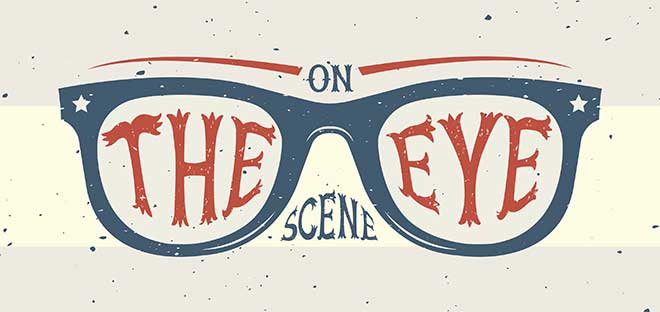One can never overestimate the importance of eyes. They’re our windows to the world and our introduction to beauty. They enable us to express love, sadness and joy without words. In return, all we have to do is protect them from the sun and other harsh elements, and give them some extra TLC when they—and we—age. Be good to them, and they’ll be good to you.
cataracts & implantable lenses
As the 65th anniversary of modern cataract surgery approaches, its benefits are becoming ‘clearer.’ Not only can this age-related cloudiness be removed, but attendant procedures have become so advanced that new lenses can be inserted at the same time, improving vision to levels never imagined.
ocular inevitability
Most people will experience cataract surgery. That’s the word from the experts. A cataract is the clouding of the lens that focuses light passing through the front of the eye. As the lens becomes cloudy with age it cannot pass, let alone focus, much light. “Everyone, if they live long enough, develops cataracts,” says Dr. Matthew D. Council, SLUCare ophthalmologist. “In some people they grow very slowly, other people present in their 50s.” Cataract surgery is the most common Medicare surgery, Council adds, and as an outpatient procedure, you come and go the same day.
aim high
“With modern cataract surgery our goal is to give the highest quality of vision, ideally without the need for glasses,” explains Council. There are lens options available that help doctors achieve that. Medicare covers what Council calls ‘the traditional monofocal lens.’ “It can make the distance vision very sharp and clear. But the tradeoff is that one still needs reading glasses or contact lenses to see things up close,” he says.
“In the last 10 years we have had numerous advances in lens technology which allow us to fix multiple types of prescription errors,” says Dr. Sean M. Breit, an ophthalmologist at Eye Care Associates. “We can correct vision for patients who are near-sighted or far-sighted, who have thick glasses or thin glasses or astigmatism. Even bifocal lenses are available. We have a much wider range of things we can correct with the one procedure, and within a week people are seeing pretty well.”
why me?
It’s not you, it’s everyone. Presbyopia, the blurring of close vision, is one of life’s inevitable hassles. The advances in lenses permit improving both close and distance vision, Breit says. “There are a couple of technologies available in bifocal lenses. They either split the light and present two pictures to the eye at the same time and the brain trains itself to look at the picture of interest.” Or, “there are accommodating lenses that change power inside the eye,” he explains.
Both types of lens require the brain to learn new capabilities. “For the bifocal, there is a learning curve, an adaptation period, which for some patients can last a couple of months. For the accommodating lenses it takes muscular training of the eyes to get them used to refocusing,” Breit says. “Most within a week are seeing pretty well.”
New lenses also can correct astigmatism, a blurriness caused by an irregular shape of the cornea (the clear front cover of the eye) or the lens. “In the past, astigmatism kept people from being able to use implants. In recent years we have gotten lenses that treat astigmatism just as glasses do. It gives excellent distance vision without glasses,” Council says.
readers
It’s a good thing reading glasses have become a universal fashion accessory. With baby boomers aging into seniorhood, eyeglasses are a growth industry, but why will we all need them at some point in time?
glasses are inevitable
“After the age of 40 we begin to lose our ability to accommodate, meaning to focus our eyes closer than about 14 inches,” says Dr. Humeyra Karacal, an ophthalmologist with Washington University Physicians. “Unless you are near-sighted, you will need reading glasses to see fine print. This doesn’t happen at the same age for everyone.”
While the loss of close focusing is a certainty, the reasons for it are not. “We don’t know exactly why this happens,” Karacal says. “Some people think the lens in our eye, which is like the lens of a camera, loses its elasticity. Other people think the muscles that attach to the lens lose their elasticity. It’s part of the aging process.”
miracle cure
A new device makes it possible to correct the loss of the eye’s ability to change focus. The KAMRA Inlay was approved last year and is utilized in the St. Louis area by Dr. Jay Pepose, medical director of Pepose Vision Institute. The inlay, thinner and smaller than a contact lens, has a black outer ring with a small clear opening in the center. It is implanted in front of the lens in the cornea, the clear front surface of the eye.
“It functions like the aperture of a camera. If you dial down the aperture, that increases the depth of field,” Pepose explains. “If you make your pupil smaller, you create more depth of focus by blocking the unfocused peripheral rays of light. It increases near vision without degrading distance vision.”
The brain learns to adapt to the new images sent from the eyes, he says. “Some people adapt within a week and some take a month.” The FDA called KAMRA the first implantable device for correction of near vision in patients who have not had cataract surgery.
costs v. benefits
The KAMRA Inlay, which costs $5,000 to $6,000, is placed in the patient’s non-dominant eye after a small opening is made with a femtosecond laser. The procedure takes only 10 to 15 minutes. “One eye is enough to provide near vision,” Pepose says. “If we blocked light transmission in two eyes people would notice, particularly in dim light.”
KAMRA works well for people in the middle years of life, before cataracts prompt lens replacement, he says. “Younger patients can have LASIK and usually are not going to need inlays. The KAMRA inlay can be done for someone between 45 and 55 or 60 years old who doesn’t have cataracts.” The inlay can improve vision to the point that the average patient can read newsprint-sized type, Pepose says, although reading glasses still may be needed to read extremely tiny type or to work in low light.
sunglasses
We wouldn’t sit on the beach all day without sunblock, or walk around the golf course without a hat, so why would anyone consider going out the door without protecting their eyes? And not just any sunglasses will do: make sure they have UV screening and that they protect your eyes from the side, too.
what’s the harm?
Ultraviolet radiation from the sun, shorter in wavelengths than visible light, is harmful to the eyes and the delicate skin around the eyes, says Dr. Farheen Raja of West County Ophthalmology at St. Luke’s Hospital. “UV light can damage the surface tissues of the eye, the cornea and even the lens,” she says. “It can cause growths on the eye, macular degeneration and skin cancers on the eyelids.” If that isn’t enough to have you running to the sunglass store, sun exposure also can increase the risk of cataracts.
“If we all lived long enough, eventually we would all get cataracts,” says Stacey Plank, optician and owner of The Eye Bar boutiques. “The UV protection in lenses helps prevent cataracts.” Does that mean you need to get those expensive, branded shades?
Not necessarily. “Even the common glasses in a department store can be UV-protective,” Raja notes. “It’s a matter of buying glasses that are labeled as ‘UV 400’ or ‘100-percent UV protection.’” Plank confirms: “Sunglasses and most eyeglasses today have UV protection, and you can find UV protection in many price ranges.”
365 days a year
Ultraviolet radiation can damage body tissues down to the level of the DNA, and not only on sunny days. Two wavelength ranges of ultraviolet light – UVA and UVB – are the culprits. “We see the damage more in patients who are out in the sun a lot—surfers, skiers, fishermen, farmers and anyone who spends long amounts of time along rivers or oceans or in the mountains,” Raja says. “Even when you are out on a cloudy day, it still helps to wear your sunglasses and a hat. Clouds don’t block UV light.”
It also is not safe to assume that all sunglasses block ultraviolet light, she cautions. “A sun safety survey by the American Academy of Ophthalmology found that only half of people who wear sunglasses checked UV ratings before buying them.”
The precise labelling of glasses is important, too, Plank adds. “Any glasses can say they have UV protection, but it may not be 100-percent protection. Make sure it says 100-percent protection for UVA and UVB.”
cost & quality
Protection is the main thing, but there are other qualities you may want in your sunglasses, however it will cost you. “The luxury lines of sunglasses will have things like anti-reflective coatings that minimize glare, and lens materials that don’t scratch as easily,” explains Plank. “The frame materials, also, are going to be much higher in quality so you will not be replacing them frequently.” Polarized lenses are a neat and popular feature, too, but polarization should not be confused with UV protection, Raja says.
“Polarized glasses block glare but don’t block UV light. There can be polarized glasses that also block UV light. Those are OK.” And, of course, you need to be sure those pesky rays don’t sneak in via the sides of your glasses. “Fortunately, current fashion trends are running toward large glasses, so coverage is not an issue,” Plank says.








